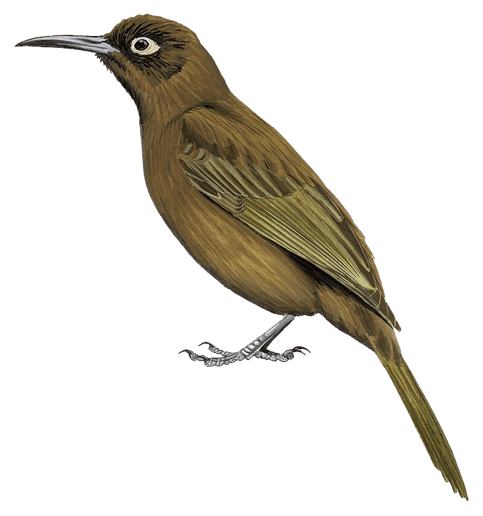
Bismarck Honeyeater
Vosea whitemanensisFAMILY
Honeyeaters (Meliphagidae)
LAST DOCUMENTED
1999
(26 years)
REGION
Oceania
IUCN STATUS
Near Threatened
Background
Endemic to montane forests on the island of New Britain (Papua New Guinea), the Bismarck Honeyeater has been rarely encountered by birders and ornithologists. The first scientific collection of the honeyeater was in 1958 by E. Thomas and Margaret Gilliard, who described it as a new species, in the Whiteman Mountains of southwestern New Britain. A Bismarck Honeyeater was photographed in New Britain's Nakanai Mountains in 1979, and in March-April 1999 the honeyeater was found and photographed again in the Nakanai by University of Wisconsin's New Britain Biological Survey expedition. From 1999 there were no documented records of the species that we are aware of until the honeyeater was photographed, again in the Nakanai, by Charles Davies in October 2023.
While the inaccessible nature of the Bismarck Honeyeater's montane forest home has led to it qualifying as a lost species on multiple occasions (1958-1979, 1979-1999, and most recently for 24 years from 1999 to 2023), the species is not seriously threatened with extinction and is currently classified as Near Threatened by the IUCN Red List.
Conservation Status
The Bismarck Honeyeater is considered Near Threatened by the IUCN Red List.
Last Documented
After a gap of 24 years, a Bismarck Honeyeater was photographed in the Nakanai Mountains in October 2023. Prior to this, the last documented records were in March-April 1999 by the University of Wisconsin's New Britain Biological Survey expedition and in December 1979, all in the Nakanai Mountains. The honeyeater has apparently not been documented in the Whiteman Mountains since the type specimens were collected in 1958.
Page Editors
- John C. Mittermeier
- Search for Lost Birds
Species News
- Nothing Yet.
Support The Search for Lost Birds
Donations from supporters like you make expeditions, science, and conservation possible. Help support the Search.